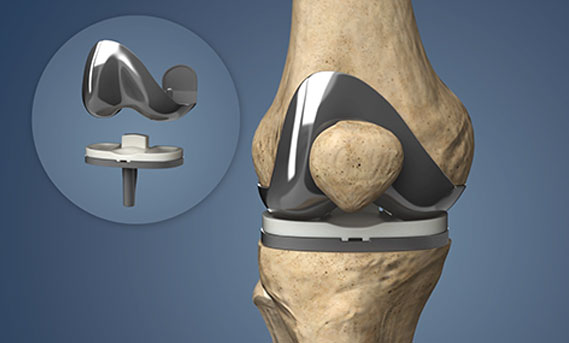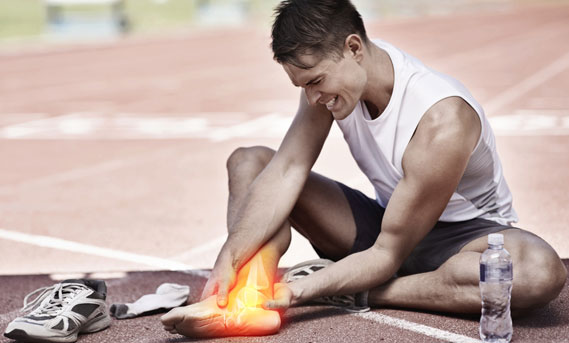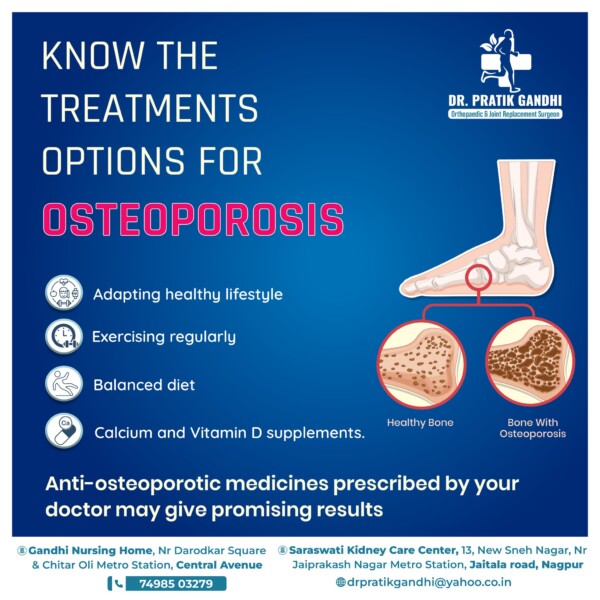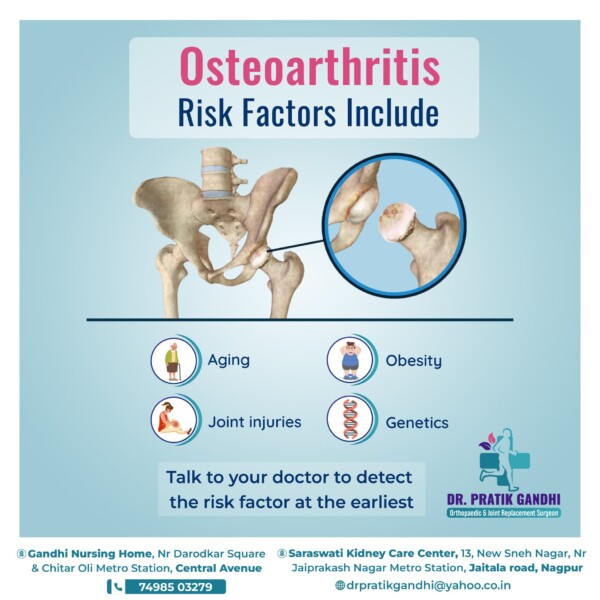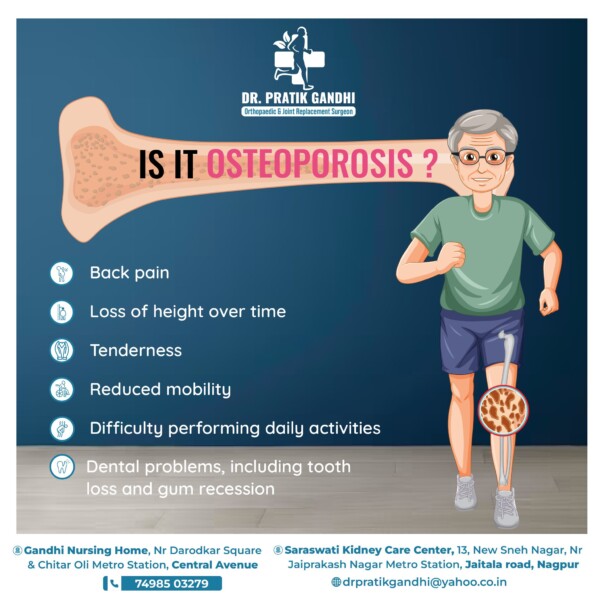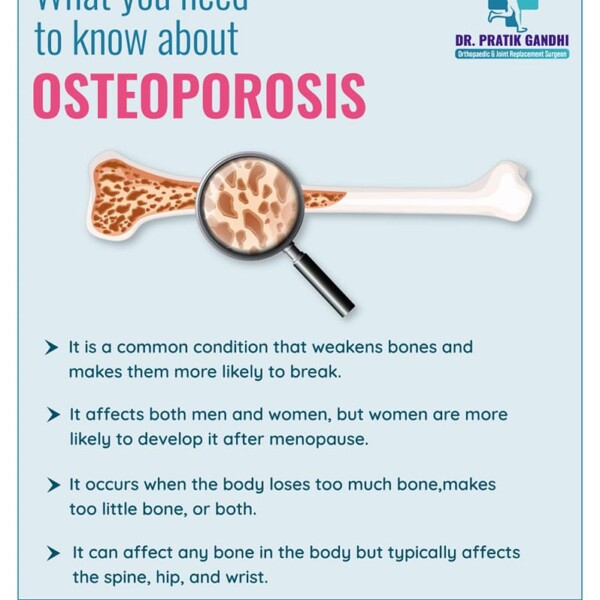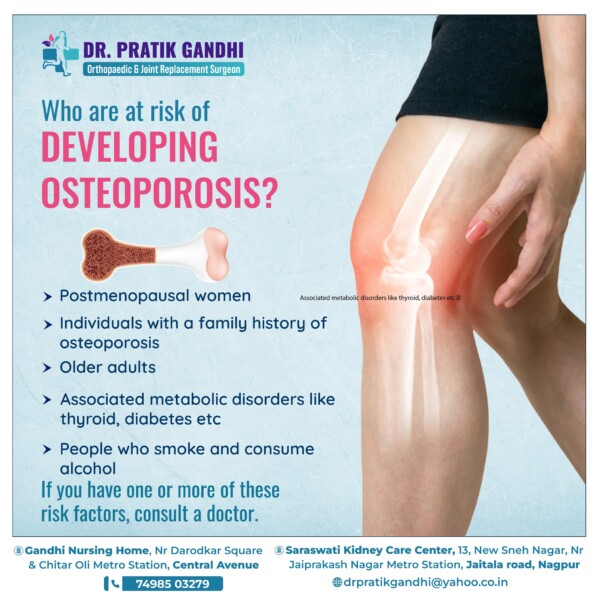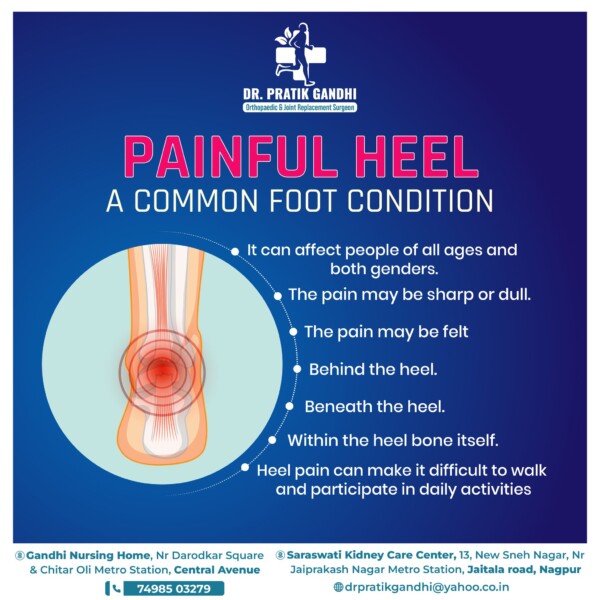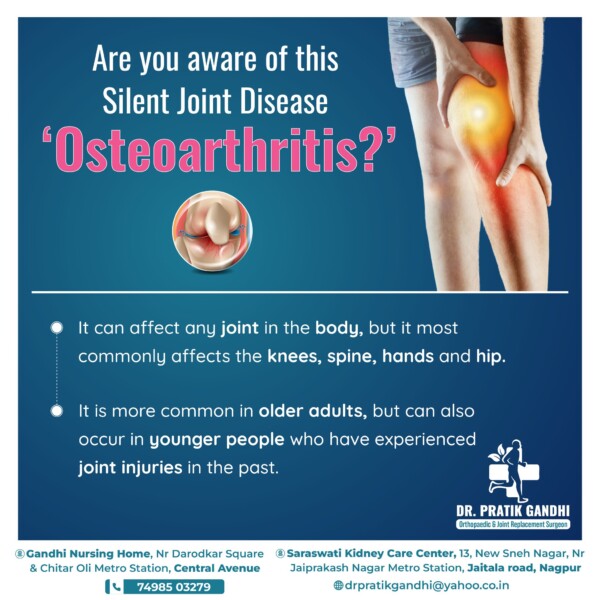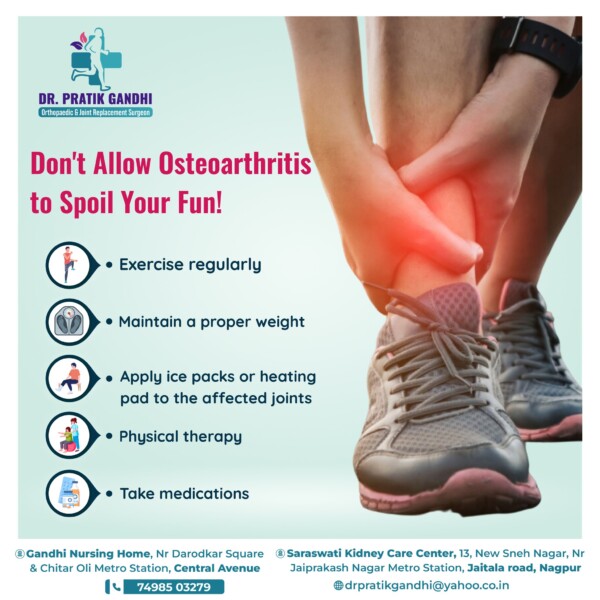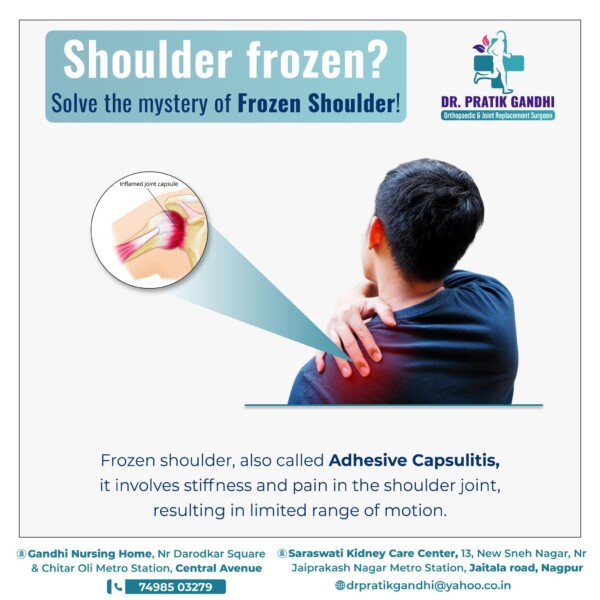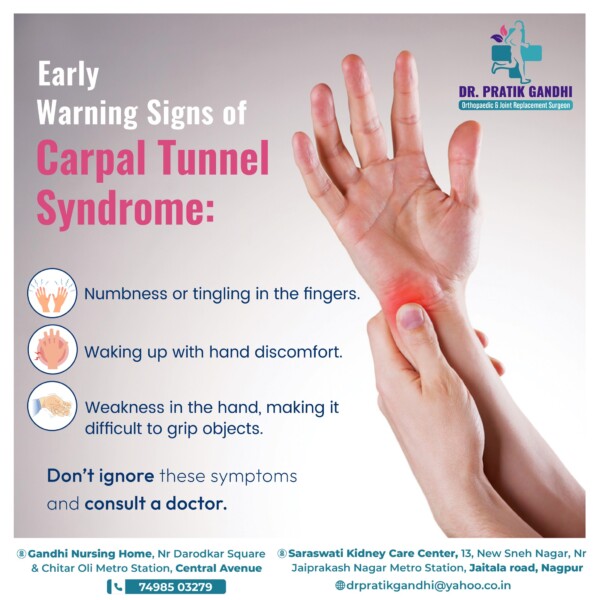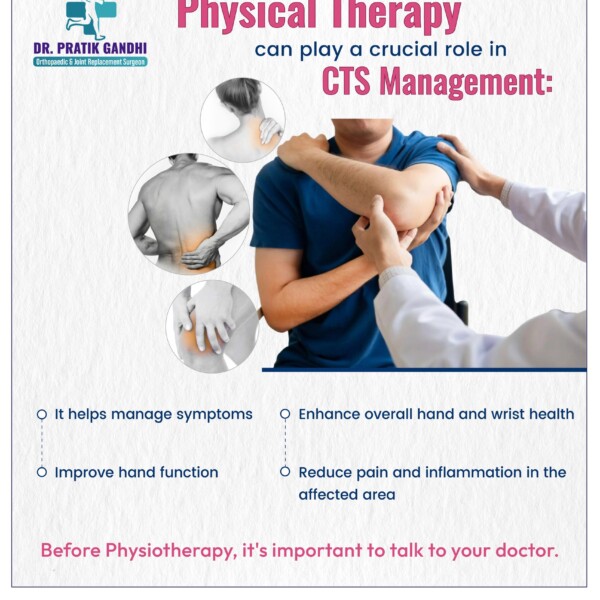“Joint replacement” refers to a surgical procedure in which a damaged or diseased joint—usually due to arthritis, trauma, or wear and tear—is replaced with an artificial implant (prosthesis). The goal is to relieve pain, restore function, and improve quality of life.

Joint Replacement Surgeon in Nagpur
DR. PRATIK GANDHI
MBBS, MS (Orthopaedics)
Fellowship in Joint Replacement (Hyderabad)
Consultant Orthopaedic & Joint Replacement Surgeon
- He is a Consultant Orthopaedic Surgeon and Joint Replacement Surgeon with an experience of over a decade.
- He has completed his Post Graduation from Mysore (Karnataka) Rajiv Gandhi University of health sciences, University, Bangalore.
- Fellowship in Trauma Surgery under Dr. R. M. Chandak, Nagpur which is one of the best Orthopaedic centres in central India.
- Fellowship in Joint Replacement under Dr. H. J. Sangtani, Nagpur and Dr. Gurava Reddy, Kims Sunshine Hospitals, Secunderabad, which is one of the best Joint Replacement facilities in India. Here he has performed and assisted several Joint Replacement and Revision Surgeries.
What Patients Say
Gandhi Orthopaedic Centre
Gandhi Nursing Home
Address : Shripad Complex, First & Second Floor, Near Darodkar Square, Central Avenue, Nagpur – 440032
Phone : 7498503279 / (0712) 2767575 / 7020344298
Email : drpratikgandhi@yahoo.co.in
Quick Enquiry
Joint Replacement in Nagpur
Best Orthopaedic Treatment in Nagpur
Orthopaedics FAQ
Why is it performed?
Joint replacement is typically recommended when non-surgical treatments like medications, physical therapy, and activity modifications no longer provide relief from severe joint pain and disability. The most common reason for joint replacement is arthritis, particularly osteoarthritis, which causes the loss of cartilage in a joint. Other reasons can include:
- Rheumatoid arthritis
- Avascular necrosis (loss of blood supply to the bone)
- Congenital and post-traumatic injuries
- Infections
- Fractures
Commonly Replaced Joints
While almost any joint can be replaced, the most common joint replacement surgeries are:
- Hip Replacement : Replaces the damaged ball (upper end of the femur) and socket (in the pelvis) with artificial components, usually made of metal, plastic, or ceramic.
- Knee Replacement : Replaces the damaged cartilage and bone in the knee joint with artificial components. This can be a total knee replacement (replacing all three compartments of the knee) or a partial knee replacement (replacing only the affected part).
- Shoulder Replacement : Replaces the shoulder joint with an artificial one, often for arthritis or severe fractures.
- Less common replacements include ankle, elbow, wrist, and finger joints.
Types of Joint Replacement Procedures
- Total Joint Replacement (Total Arthroplasty) : Replaces all parts of the joint with a prosthetic implant.
- Partial Joint Replacement (Partial Arthroplsty or Joint Resurfacing) : Replaces only some damaged parts of the joint.
- Revision Joint Replacement : Performed when a previously replaced joint needs to be adjusted or replaced due to wear, loosening, or other issues.
- Robotic-assisted Joint Replacement : Uses a special computer that guides surgical tools, potentially leading to greater accuracy and more secure implant insertion.
Benefits of Joint Replacement Surgery
- Significant pain relief : Often the most impactful benefit, leading to a drastic reduction or elimination of chronic pain.
- Improved mobility and function : Restores range of motion, allowing patients to perform daily activities more easily.
- Enhanced quality of life : Patients often report feeling more active, independent, and generally have a better quality of life.
- Long-lasting results : Many joint replacements can last 15-20 years or more.
Recovery from Joint Replacement Surgery
Recovery is a gradual process that can take several months to a year for full healing. Key aspects of recovery include:
- Immediate Post-Op : Pain management is crucial. Patients are encouraged to start moving and walking with assistance soon after surgery to prevent blood clots and stiffness.
- Hospital Stay : Typically a few days, during which pain management, wound care, and initial physical therapy begin.
- Physical Therapy : A structured rehabilitation program is essential. It usually starts immediately after surgery and continues for weeks to months to strengthen muscles and improve joint range of motion.
- Mobility Aids : Walkers, crutches, or canes are often used initially.
- Home Adjustments: Modifying the living space (e.g., grab bars, raised toilet seats) can aid in safety and daily activities.
- Activity Restrictions : High-impact activities like running or jumping are usually discouraged long-term to protect the new joint. Low-impact activities like walking, swimming, and cycling are often recommended.
- Long-Term : Maintaining a healthy weight and an active lifestyle are vital for the longevity of the replacement.
Why Joint Replacement in Nagpur
At our hospital, our joint replacement surgeons embody this remarkable blend, dedicated to restoring mobility and enhancing the quality of life for patients suffering from debilitating joint conditions. With a deep understanding of human anatomy, biomechanics, and advanced surgical techniques, we replace worn-out joints with cutting-edge implants, enabling patients to move freely and live without pain.
Roles and Responsibilities
- Patient Evaluation: We conduct thorough evaluations of patients to determine the extent of joint damage and the most appropriate treatment options. This includes physical examinations, medical history reviews, and imaging studies like X-rays, MRI, or CT scans.
- Surgical Planning: We develop detailed surgical plans tailored to each patient’s unique anatomy and condition. This involves selecting the appropriate type and size of implant and determining the optimal surgical approach.
- Surgical Procedure: Our surgeons perform joint replacement surgeries with precision and care. This involves removing the damaged joint surfaces and replacing them with artificial components made of metal, plastic, or ceramic.
- Postoperative Care: We provide comprehensive postoperative care to ensure proper healing and recovery. This includes pain management, physical therapy, and regular follow-up appointments to monitor progress and address any complications.
- Patient Education: We educate patients and their families about the surgery, recovery process, and lifestyle modifications to ensure the best outcomes. This includes guidance on physical activity, diet, and managing any comorbid conditions.
Skills and Qualities
- Technical Proficiency: Mastery of surgical techniques and the ability to perform complex procedures with precision.
- Attention to Detail: A meticulous approach to surgical planning and execution to ensure optimal outcomes.
- Problem-Solving Skills: The ability to quickly address intraoperative and postoperative complications.
- Empathy and Communication: Strong interpersonal skills to effectively communicate with patients, understand their concerns, and provide compassionate care.
- Continuous Learning: Commitment to staying updated with the latest advancements in joint replacement technologies and techniques through ongoing education and professional development.
Technological Advancements
Joint replacement surgery has benefited significantly from technological advancements, including:
- Robotic-Assisted Surgery: Enhances precision and accuracy during the procedure, leading to better alignment and placement of implants.
- 3D Printing: Allows for the creation of custom implants tailored to the patient’s specific anatomy.
- Minimally Invasive Techniques: Result in smaller incisions, less tissue damage, reduced pain, and faster recovery times.
- Enhanced Prosthetic Materials: Development of longer-lasting and more durable materials for implants, improving their lifespan and functionality.


